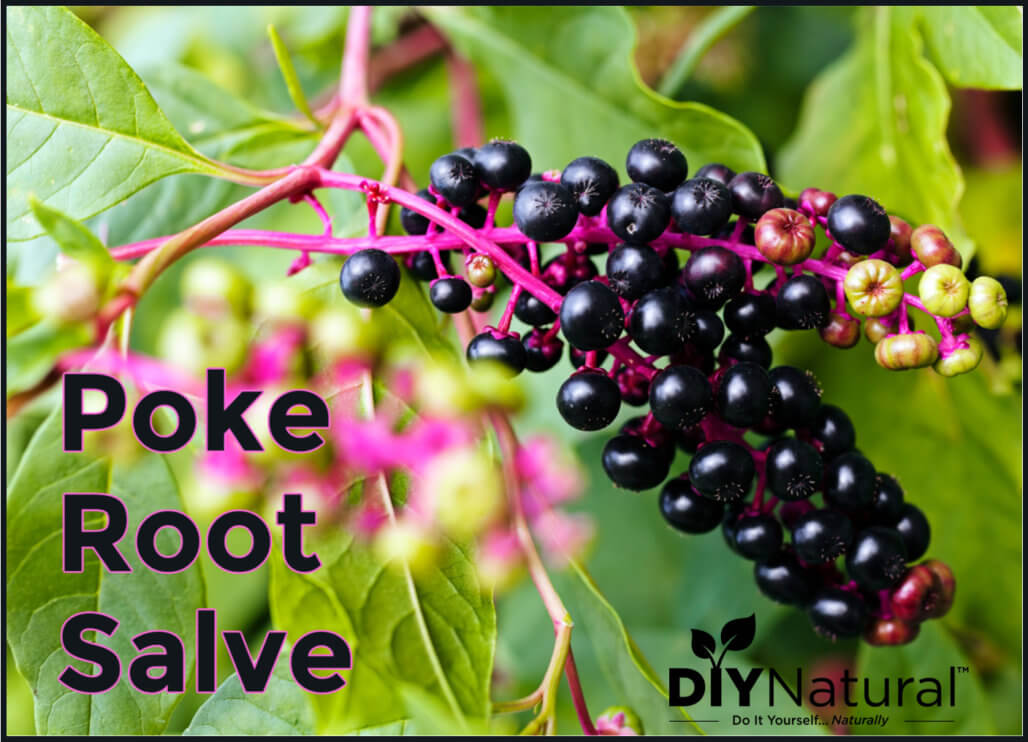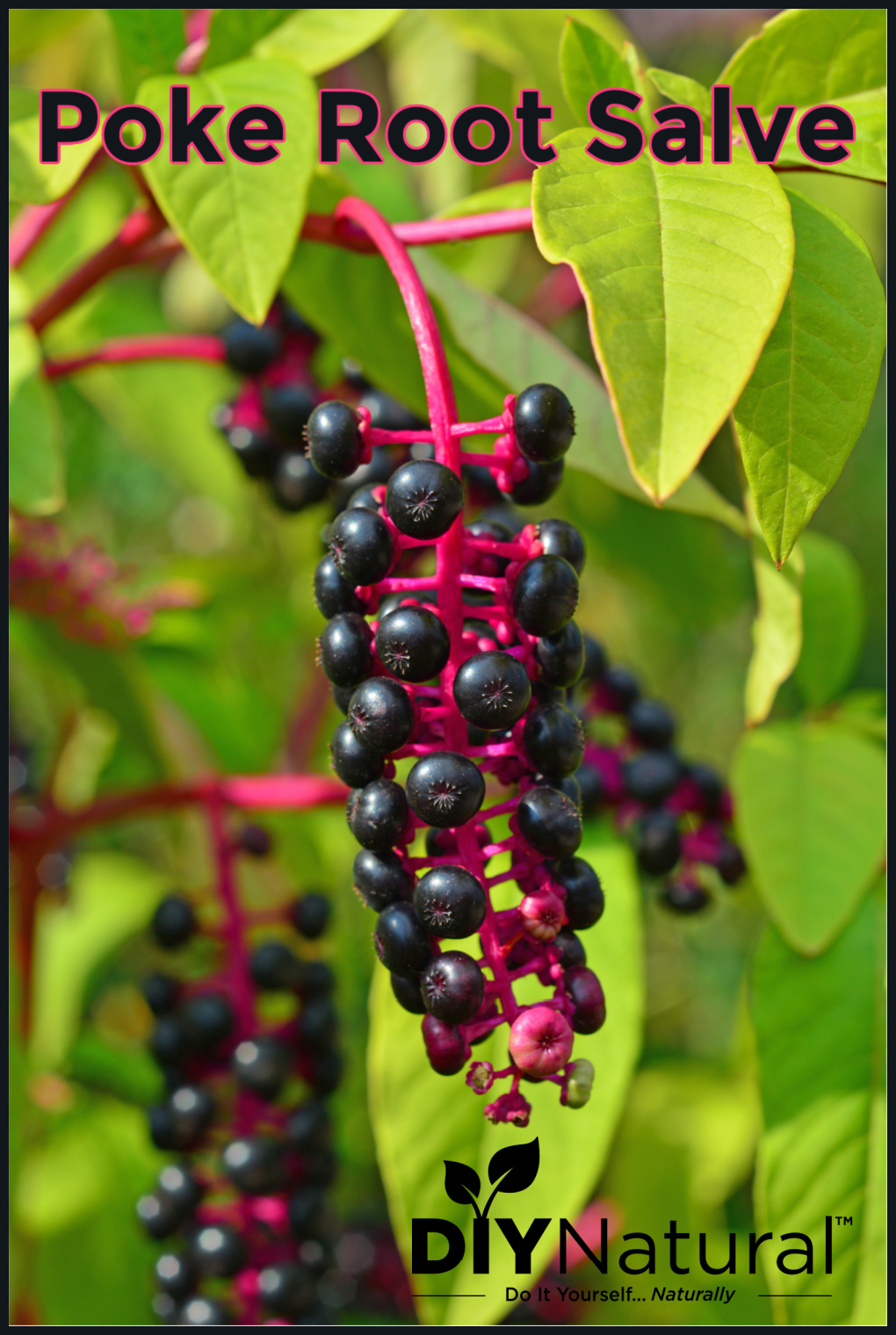
Make poke root salve for bumps, bites, and scrapes by preparing an infused oil from the root then mixing in some beeswax and shea butter.
In many parts of the country, even overseas some, Poke Root, or Phytolacca americana is known for its purplish-black berries found in the fall. The leaves can be eaten in the spring if carefully prepared, but the berries are toxic. The real treasure in this plant is the root. Poke Root can be made into a slave that can help to heal many injuries. That said, the root is toxic if eaten so do not eat it!
Harvesting the Root
If you don’t want to harvest your own you can pick some up here.
Fall is the best time to find poke. It gets very tall, sometimes over 10 feet, and has a reddish-pink stem. The stem can get as big around as your arm, or be as thin as a pencil. Once the stem starts to wilt and turns brown, get a shovel. You can even dig the root after the plant has died in early winter. The root can be very large. I have a photo of a friend holding one like a baby. It was about that size! They are usually much smaller.
Preparing Poke Root for Salve
Dig the root and clean it well. You may need a brush to get into the wrinkles and crevices on the surface.
Dry the poke root out for a few days. You’ll want to get rid of at least some of the moisture in it. You can chop or shred it to create more surface area. It is a fairly dry root, so it’s not necessary to dehydrate it.
Once it is a bit drier than fresh, place it in a quart jar. You’ll want to fill the jar about half full. Then cover with your favorite infusing oil. I like sunflower and safflower because they are high in vitamin E. But almost any oil will work. Tighten the lid and shake well. Place in a sunny spot for 4-6 weeks. Shake weekly.
Once your oil infusion has sat for the required time, strain and you’re ready to make your salve.
Making the Poke Root Salve
Here’s the recipe I use for making poke root salve. It can be adjusted to make it softer or firmer, depending on the type of salve that you like.
- 1/4 cup poke root infused oil
- 2 Tablespoons beeswax
- 1 teaspoon shea butter
Melt all of these together in a double boiler. Use a metal spoon so you can check the consistency quickly. Wood and plastic do not cool as fast. Once it has cooled on the spoon, you’ll be able to tell if you need a bit more oil to make it softer or a bit more wax to make it firmer. Once you have it at the right texture, pour into a jar with a wide mouth on it. I use 4-ounce glass jelly jars because they have great fitting lids and you can dip your finger into them easily enough. Whatever you use, make sure it is heatproof enough to handle the hot oils. Some plastics may melt or warp.
This salve will keep for a year or so. I use mine up in less than half that time, so you’ll probably be making more soon!
Uses for Poke Root Salve
At the beginning of the article, we talked about poke root salve being good for injuries. It can help to heal bug bites, scratches, scrapes, and shallow cuts. Deeper cuts may require stitches, so be sure to have them looked at.
Poke root salve is also good for lumps and growths, especially those resulting from lymph gland problems. Poke root can help loosen up lymph glands to help them process better. Plugged or stopped up lymph glands can create lumps of all kinds, including tumors or more benign cysts. Rub the balm into the skin over the affected area twice a day. You should start seeing results in a week or two.
Poke root salve has also been used to treat psoriasis. It won’t cure it, but it can help relieve the symptoms of itching and inflammation. Apply a few times a week for best results.
There is some evidence that poke root helps with Athlete’s Foot fungus. Apply to the bottom of the foot at night. Do this twice to three times a week.
Have you used poke root salve? Why not make your own?
Tip: check out our other salve recipes.
*******



